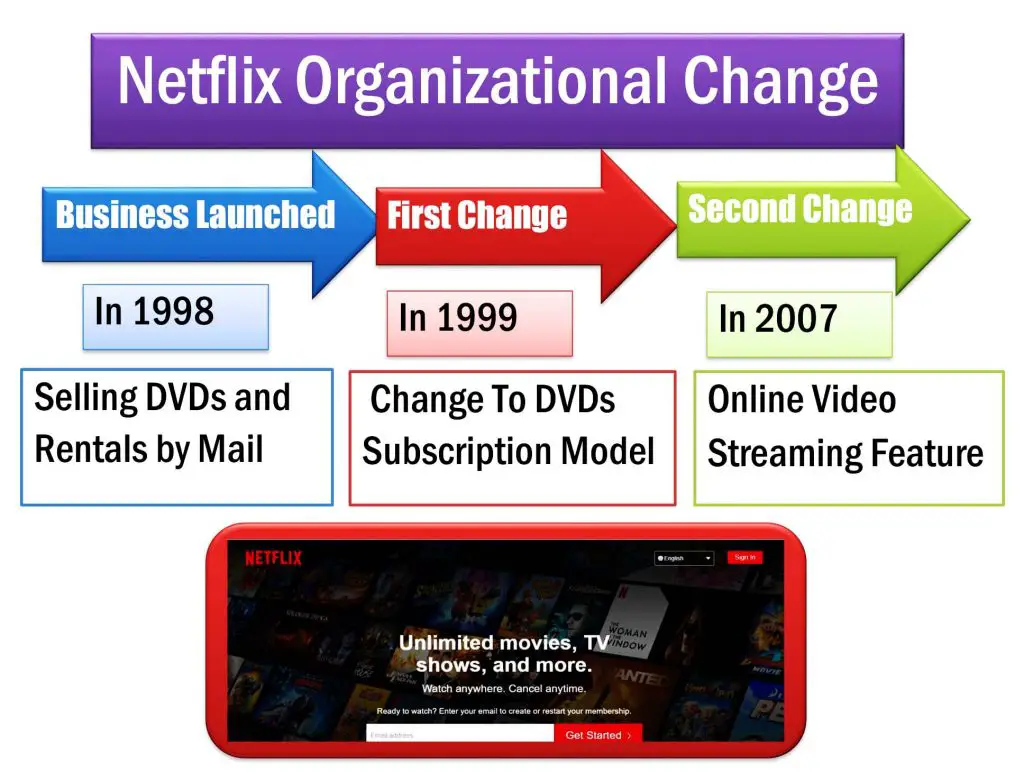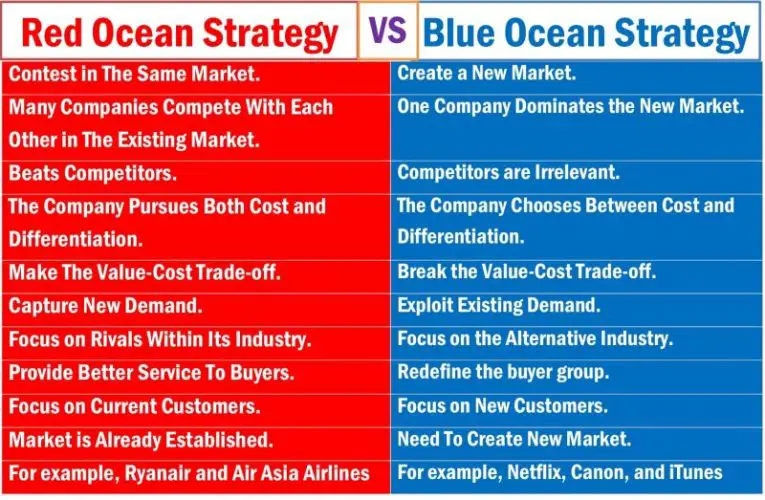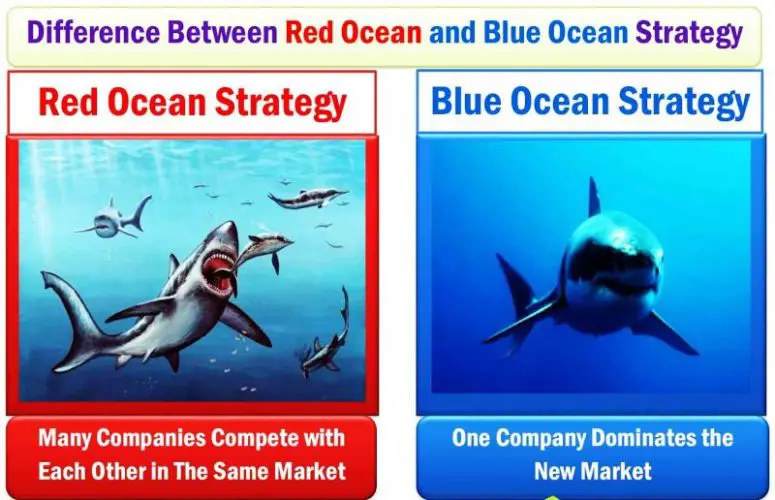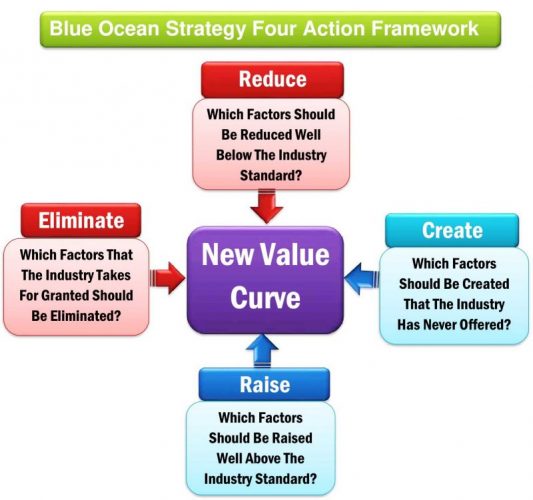Netflix Organizational Change. Netflix Organizational Structure 2024. Case Study Netflix Change Management. Organizational Structure of Netflix.
Netflix
Netflix is an online video streaming platform that allows users to watch movies, dramas, TV shows, and cartoons. The user can watch all these videos through a subscription service. Netflix regularly adds new films, series, and TV shows to the chart so users can watch them instantly.
It ranks top 50 sites, following Google, YouTube, Yahoo, Facebook, and Twitter. Thus, Netflix has become the most popular video streaming site or web portal in the world now.
What is Organizational Change?
Organizational change means business transformation in which a company changes its business tools, such as policy, strategy, operation, structure, and culture. The critical reasons for organizational change are technology, globalization, new market condition, poor performance, and customer demand.
The management changes enable the company to cope with the digital era. Therefore, many organizations have accepted technological changes to adjust to the digital age. It assists the company in changing old systems with new tools to achieve the business goal.
Organizational Change Examples
Netflix is one of the best examples of management change. It accepts the changes to cope with the new context. Netflix’s organizational change is a real-life example of Lewin’s change management model. The management needs to pass a few stages to complete the full process. Technology, culture, and environment are the most significant factors that foster an organization to accept change.
Netflix’s Organizational Change has replaced the old procedures with new techniques to adjust to the current situation. So, Netflix is the most general example of management change. Additionally, Wipro, Infosys, Samsung, and Amazon accepted the change to achieve business success.
Netflix Change Management Case Study
The Netflix change management case study includes the organizational change at Netflix. Additionally, It describes the history of the Netflix business change model. The author presents a change management case study of Netflix for students.
Netflix Organizational Change
Technology has changed the world in many ways, including education, business, sports, entertainment, etc. Many renowned companies have been closed due to new technology such as computers, smartphones, and social media. Some have managed to cope with the force of change by applying sophisticated strategies and accepting organizational change.
Netflix is one of the best examples that has changed its business model and strategy to survive. It has handled the force of organizational change to achieve a competitive advantage. Hence, it has become netizens’ most popular video streaming site.
Netflix was founded in 1997 in California, USA. However, In 1998, Netflix started its business by selling DVDs and rentals by mail. The product was a rent-by-mail DVD, and the payment system was the pay-per-rental model.
The following year, in 1999, Netflix launched its new subscription feature for customers to rent DVDs at a monthly rate. This service allowed the subscribers to enjoy unlimited DVD rental with monthly payments. So, the change was from the pay-for-use model to a monthly subscription model. The subscribers choose the movie and video titles from Netflix’s official website. After that, the distributors send the shows in the form of DVDs to the subscribers.
Netflix Change Management Case Study
In 2007, Netflix introduced a new video streaming feature for films and television series. The proper utilization of the force of change has helped to achieve success. However, it is believed that Netflix is one of the most popular platforms for watching new movies, drama series, TV shows, and so more. They have achieved competitive advantages by adopting new features as per audience demand.
The three main divisions of Netflix management are functional, geographical, and product teams. The operational division includes the CEO, content, communication, talent, finance, legal, etc. Additionally, the geographical team consists of local and international services. Finally, the product team controls and ensures quality content.
Additional Change Management at Netflix
In 2011, Netflix introduced its mobile apps and iOS service for smartphone users. Smartphone users can download the apps free from the Play Store.
Recently, Netflix changed from HTTP to HTTPS encryption to ensure viewers’ privacy.
In 2016, Netflix launched its offline playback system to cache the contents. Therefore, Netflix mobile app users can watch high-quality cache content without an internet connection.
In 2018, Netflix added “the Skip Intro” option for customers to avoid intros of the shows. So, the users can skip the video if they want.
In 2022, Netflix started alerting customers to share their account IDs and passwords with others.
In 2022, Netflix intended to extend its business into the video gaming industry. The 200 million subscribers of Netflix can reach with a bundle of games like Apple Arcade. Video games play a significant role in attracting potential customers.
In 2023, Netflix launches a new advertising tier for subscribers. The new AVOD tier increases revenue. Users can buy a subscription at a lower cost but must encounter ads while watching videos.
Netflix History Timeline
Netflix has become one of the most famous American production companies worldwide. It was established in 1997 by Reed Hastings and Marc Randolph in California. However, Marc Randolph left Netflix in 2002. In 1998, Netflix introduced its official website with 925 items. These items were available to rent for a pay-per-month approach. It started its journey with only 35 employees.
Netflix launched its operation with the first and largest online DVD rental store. Since 2012, Netflix has produced and distributed its original content, including film and television series entertaining many viewers. This variety of content has been stored in the online library for viewing by subscribers. Since 2016, it has been providing services in around 190 countries. This company has established its office globally, including in Brazil, the Netherlands, France, the United Kingdom, Japan, India, and South Korea. In 2023, Netflix owned more than 231 million subscribers globally involved in a pay-per-month payment.
However, Netflix is available worldwide except in China, Syria, and North Korea. According to a report in 2020, Netflix earned $1.2 billion in operating income for its excellent performance with updated tools.
Netflix Organizational Structure
Netflix has a flat organizational structure that provides ample freedom for employees. It is also known as a decentralized organizational structure that allows the respective person to make quick decisions. Netflix maintains the unitary organizational structure, also known as the U-form organizational structure. It reduces organizational noise in communication and influences the employees to be more responsive to their duties. Netflix’s organizational structure avoids top-down decision-making strategies to create a conducive working environment for employees. It also focuses on creating a favorable environment to promote employee performance. Netflix has a labor division that works to improve performance. The authority reviews the performance regularly. They opt for a multi-rater feedback system that is also known as a 360-degree review method.
Netflix’s management team always focuses on practicing and maintaining the principles of total quality management tools. The TQM helped to become the most popular company worldwide.
According to McGraw Hill, Netflix wanted someone as HR director who prioritizes business first, clients second, and talent third. It also did not require Competencies For HR Professionals in SHRM certificate, change agent, or organization development practitioner. The authority considers three core issues such as who is good for the company, how we communicate with that employee, and ensure high performance.
Netflix Organizational Structure 2023-2024
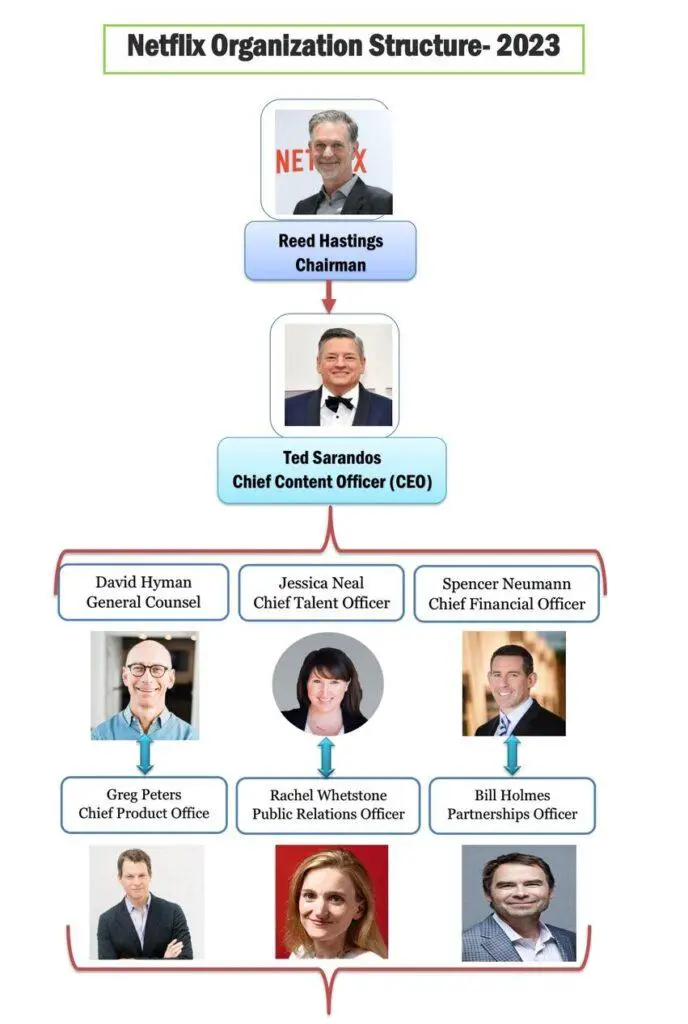
The three main divisions of Netflix management are functional, geographical, and product teams. The operational division includes the CEO, content, communication, talent, finance, legal, etc. Additionally, the geographical team consists of local and international services. Finally, the product team controls and ensures quality content.
Netflix CEO in 2023
Netflix Founder Reed Hastings stepped down from his CEO role and joined as the company chairman in 2023. Ted Sarandos is the current CEO of Netflix. In 2020, Ted Sarandos joined Netflix as co-CEO. Initially, Reed Hastings and Marc Randolph were the co-chief executive officers of Netflix. Marc Randolph left Netflix in 2002.
Netflix Organizational Transformation
First-Change in 1999
(Pay-For-Use Model Into a Subscription Model)
Netflix has made two significant changes since its launch. First, it began the subscription option in 1999 to store DVD rentals. This change allows clients to rent unlimited DVD rental without late fees. It was the first change in the business model in the history of Netflix.
Second-Change in 2007
(Streaming Service)
Later, in 2007, Netflix made its second change by launching an online video streaming service. Consumers have accepted this change. It is believed that it has become the prime business pillar of income.
Purpose of Netflix Organizational Change
Netflix is becoming famous daily for its ease of access, quality, and updated tools. After all, new technology adoption is necessary to exceed customer demand. The technology adoption models and theories, including TAM, ETAM, UTAUT, and DOI, have described why and how people accept the changes. In the 21st century, people do not want to spend extra time in the cinema hall.
People used to go to the cinema hall to watch new movies before watching movies at home on Netflix. New technology, including computers, laptops, and smartphones, easily entertain people through internet service. In addition, the social media revolution changed the way we communicate with each other. It has become an excellent site for sharing user-generated content, including photos and videos.
Most people globally use social media in many perspectives, such as in education, entertainment, and marketing. Netflix’s authority had perceived the upcoming market demand. Therefore, they have changed the business model to watch movies and television series on computers and smartphones. The management of Netflix realized that consumers do not like to store video, so they changed the business model.
Additionally, Netflix is always aware of the approaches of competitors. Blockbuster is a crucial Netflix competitor; hence, they added a new feature to distinguish it from competitors. The reason for changing the business model of Netflix was appropriate and effective to bring success.
How Netflix Handles the Organizational Change Forces
Organizational change refers to the adjustment and transformation of a company’s operations. The company brings a minor or significant change to improve productivity and cope with the new context. There are two types of forces of change in a company: external forces and internal forces. External forces include technological change, social and political change, and managing ethical behaviors.
For example, technological change is the primary external force that compelled Netflix to change the feature.
New technology changes people’s expectations and behaviors, changing the company product or service’s features, tools, and patterns. Netflix handled the forces of change effectively to bring success and prosperity to the company. Internal forces influence the organization to change management, such as changing managerial personnel, work climate, effectiveness, employee expectations, and crisis.
For example, Netflix realized that watching movies at home would reduce the entertainment budget and transportation crisis. Therefore, Netflix accepted the organizational change.
Conclusion
Netflix started its journey as an ordinary company. Now it has achieved a competitive advantage by changing its business model to fulfill customer demand. The authority of the company changed it’s features to cope with new technology. It made two changes in 1999 and 2007. However, the video streaming service brought immense fame and income to the company in 2007.
The author mentions some critical points for other companies that want to change business. Firstly, changing the business tools is significant to exceed customers’ demands. Additionally, digital technology must be accepted by employees and customers. Finally, the company must add updated tools for better function, such as Netflix starting its online video streaming in 2007. “The measure of intelligence is the ability to change” -Albert Einstein.
Netflix has followed the blue ocean strategy to achieve its business goals. The Blue Ocean strategy refers to creating a new business market. The red ocean strategy refers to competing with other companies in the same market. Blue Ocean’s strategy creates a unique market context. It also designs a new feature to attract new customers.
Hence, Netflix accepted the blue ocean strategy and has become one of the most successful companies worldwide.
Citation For This Article(APA 7th Edition)
| APA | Kobiruzzaman, M. M. (2024). Netflix Organizational Change & Management Structure 2024. Newsmoor. https://newsmoor.com/netflix-organizational-change-organizational-management-change-examples/ |
